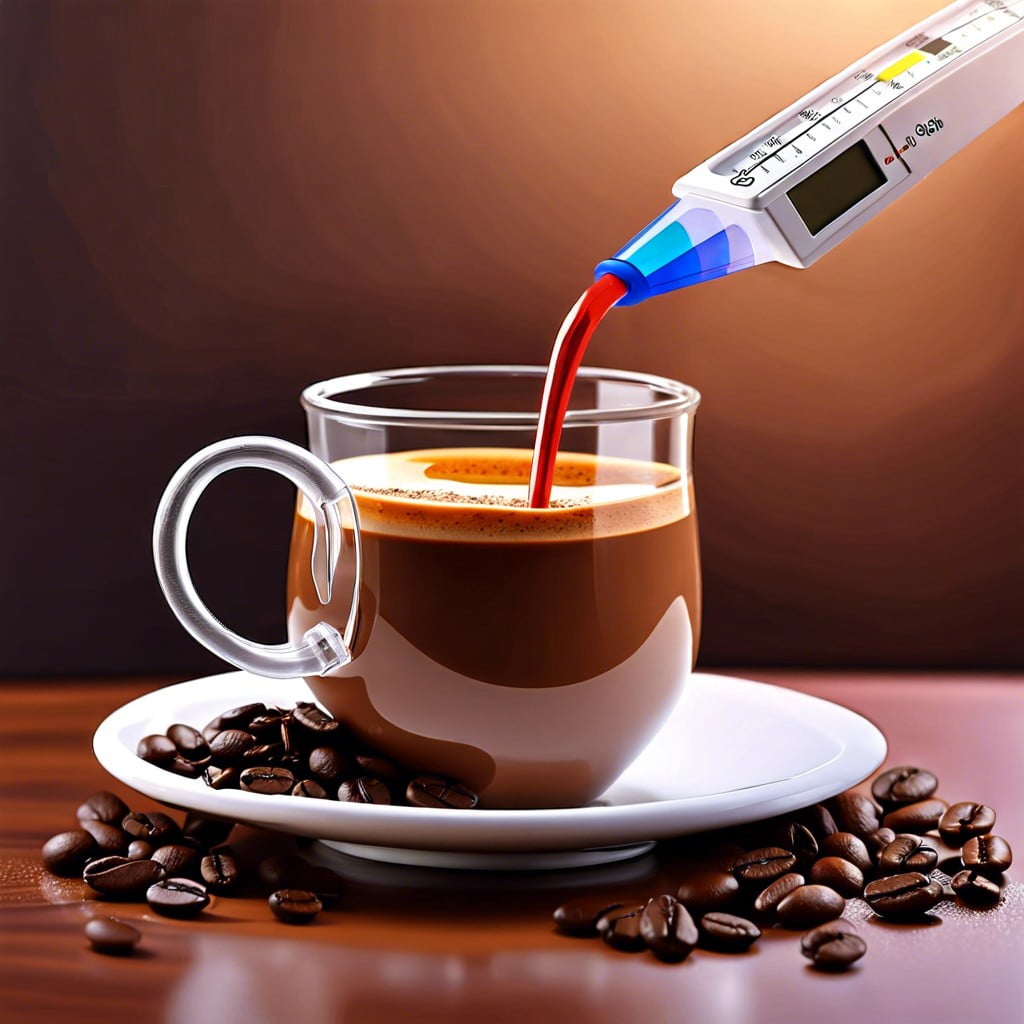Discover how the pH level of coffee affects its taste, acidity, and overall drinking experience.
Understanding the PH Scale

The pH scale measures how acidic or basic a substance is, ranging from 0 to 14. A pH of 7 is neutral, meaning it’s neither acidic nor basic. Substances with pH values less than 7 are acidic, and those above 7 are basic. Think of it as the mood scale for molecules, where 0 is super sour and 14 is incredibly chill.
Water, being the life of the neutrality party, sits at a pH of 7. Acids like lemon juice, wander around the lower numbers, typically around 2 or 3, showing their sour prowess. Bases, such as baking soda, prefer the lofty heights of 8 to 9, keeping things mellow.
This range helps chemists (and curious coffee aficionados) understand the chemical nature of liquids, which in turn affects flavor, aroma, and how your stomach feels after you drink. By measuring pH, we get a sneak peek into the chemical personality of our favorite beverages.
The Science of PH: A Brief Primer
pH, a term we often hear but might not fully grasp, essentially measures how acidic or basic a substance is on a scale from 0 to 14. Here’s the breakdown: solutions with a pH less than 7 are acidic, and those with a pH greater than 7 are basic. Pure water lands smack in the middle with a neutral pH of 7.
Understanding this scale helps when diving into more complex topics, like the acidity in your morning brew. Each number on the pH scale represents a tenfold difference in acidity or basicity. For example, a pH of 6 is ten times more acidic than a pH of 7, showing just how sensitive this measurement is. Stick with us – it’s not as intimidating as a chemistry exam, I promise!
Diving Deep: The PH of Coffee
Coffee typically has a pH that ranges from 4.85 to 5.10. However, this can vary based on several factors such as the type of bean, where it was grown, and the roasting process. Lighter roasts often have a higher acidity, which translates to a lower pH level than darker roasts. Moreover, brewing methods influence the final pH of your cup. For example, cold brew, known for its smoother and sweeter taste, is less acidic than espresso or drip coffee, primarily due to its prolonged extraction time at a lower temperature. Understanding these nuances can help customize your brewing preferences to suit your taste and digestive comfort.
Health Implications of Coffee’s Acidity
Coffee’s acidity can play a significant role in how it affects our bodies, much like a sneaky ninja influencing from the shadows! Here’s the scoop on what that low pH means for our health:
- Digestive Comfort: ** For some, the acidic nature of coffee can be like that party guest who overstays their welcome, leading to discomfort or heartburn. If your stomach isn’t the type to rock the acid-party, it might be worth considering a low-acid coffee.
- Tooth Enamel: ** Your teeth might not appreciate coffee’s low pH as much as your taste buds do. Regular exposure might invite enamel erosion, basically sneaking away the armor that protects your teeth. Combat this by rinsing with water after your cup.
- Nutrient Absorption: ** Interestingly, the acidity in coffee can influence nutrient uptake, especially iron. It’s like a gatekeeper that decides how much iron should enter your bloodstream. To sidestep this issue, maybe don’t pair your iron-rich meals with a cup of java.
Understanding these impacts can help adjust your coffee habits for better harmony with your health—it’s all about finding that sweet spot!